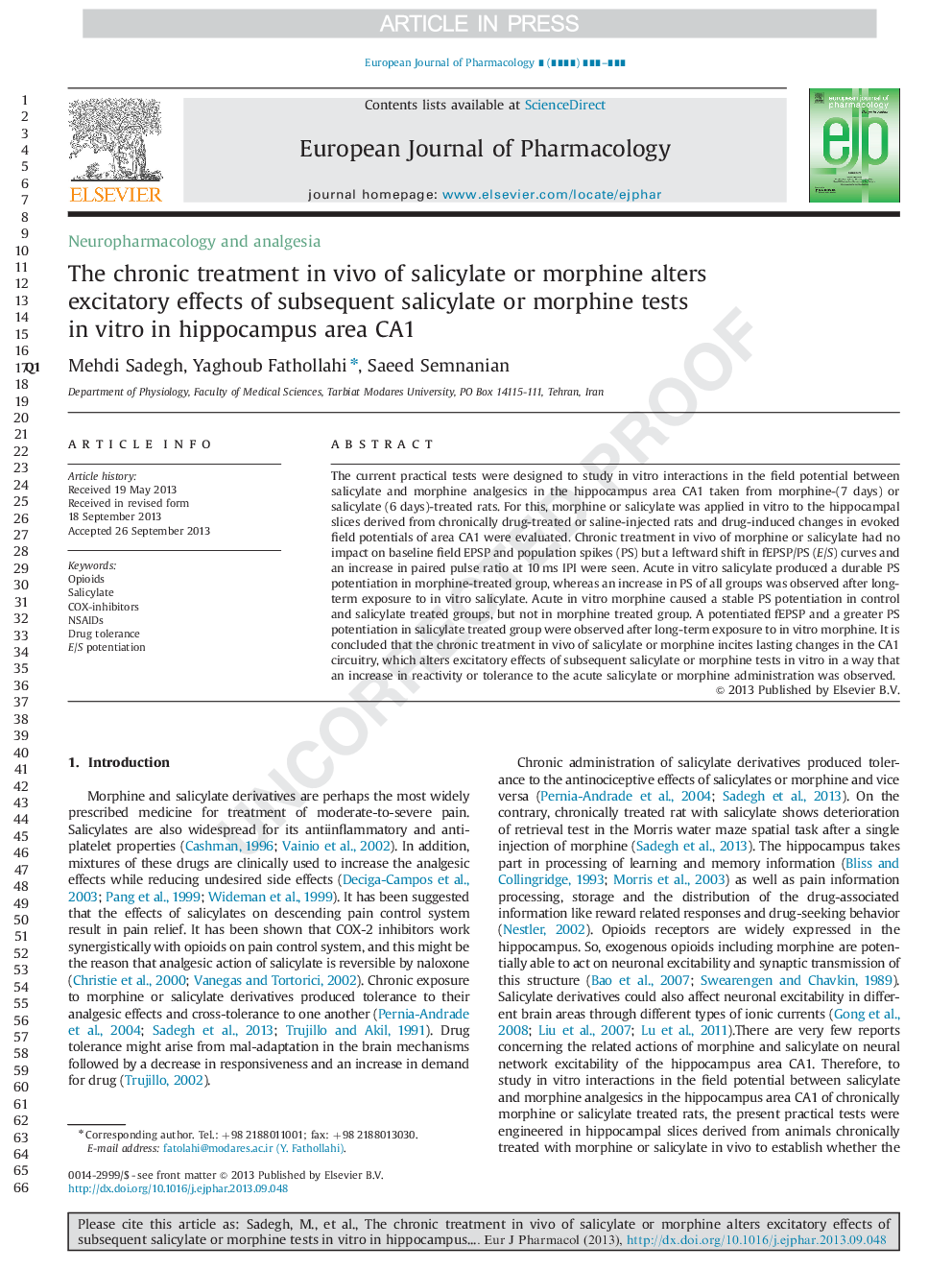| Article ID | Journal | Published Year | Pages | File Type |
|---|---|---|---|---|
| 5828157 | European Journal of Pharmacology | 2013 | 6 Pages |
Abstract
The current practical tests were designed to study in vitro interactions in the field potential between salicylate and morphine analgesics in the hippocampus area CA1 taken from morphine-(7 days) or salicylate (6 days)-treated rats. For this, morphine or salicylate was applied in vitro to the hippocampal slices derived from chronically drug-treated or saline-injected rats and drug-induced changes in evoked field potentials of area CA1 were evaluated. Chronic treatment in vivo of morphine or salicylate had no impact on baseline field EPSP and population spikes (PS) but a leftward shift in fEPSP/PS (E/S) curves and an increase in paired pulse ratio at 10Â ms IPI were seen. Acute in vitro salicylate produced a durable PS potentiation in morphine-treated group, whereas an increase in PS of all groups was observed after long-term exposure to in vitro salicylate. Acute in vitro morphine caused a stable PS potentiation in control and salicylate treated groups, but not in morphine treated group. A potentiated fEPSP and a greater PS potentiation in salicylate treated group were observed after long-term exposure to in vitro morphine. It is concluded that the chronic treatment in vivo of salicylate or morphine incites lasting changes in the CA1 circuitry, which alters excitatory effects of subsequent salicylate or morphine tests in vitro in a way that an increase in reactivity or tolerance to the acute salicylate or morphine administration was observed.
Related Topics
Life Sciences
Neuroscience
Cellular and Molecular Neuroscience
Authors
Mehdi Sadegh, Yaghoub Fathollahi, Saeed Semnanian,
